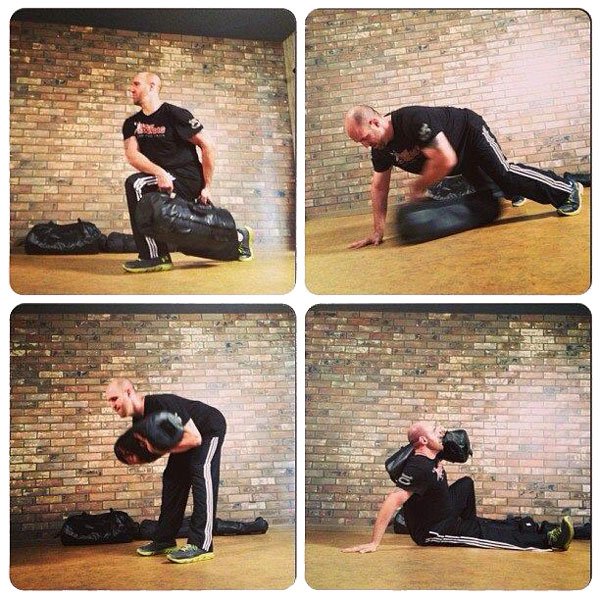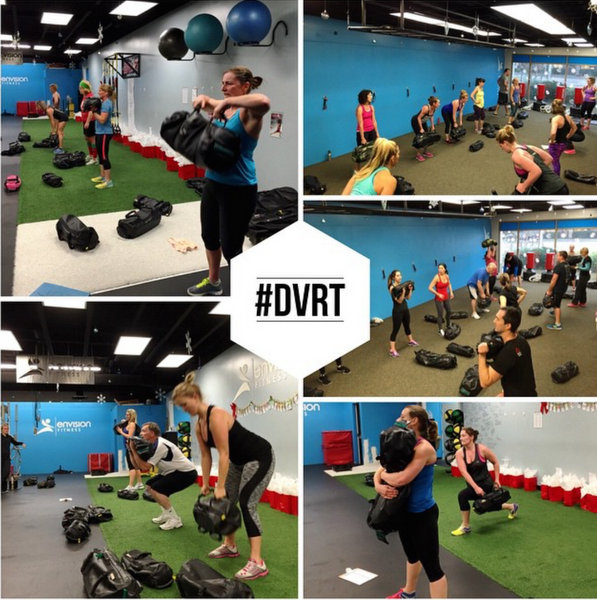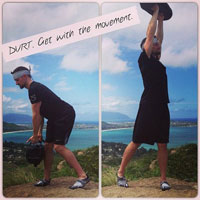How to Instantly Communicate and Coach with the DVRT Universal Language of Exercise
by Steve Di Tomaso, DVRT Master Instructor, CSCS

How do I perform this exercise? What equipment do I need, and how do I hold it? These are common fitness questions.
It would be great if we all spoke the same language, but unfortunately coaches have developed individual dialects when describing exercises. Adding the layers of the
DVRT system greatly increases the potential for mass confusion amongst coaches and exercise enthusiasts. It’s no one’s fault—until now there hasn’t been a system. Now, the DVRT has created the solution: a universal language.
What does it mean when somebody says, "I did squats today"? Before I knew any better, I assumed the barbell back squat was the only way to squat. As I continued to learn more, I realized that particular type of squat was only the tip of a very large spear. The understanding that the squat is a foundational movement that can be performed in countless ways for different purposes completely changed how I thought about exercise.
For example, take the squat movement pattern and consider the position of the load. When performing a barbell back squat, the load is placed on the back. There are generally two barbell load positions for squatting—the front and the back of the body. But, we open up another can of worms when considering the Ultimate Sandbag’s possible load positions for performing a squat. Each load position will cause a different demand on the body—which will make a movement easier or harder to perform.
Have you or a client ever had issues like leaning too far forward or lifting the heels while descending to the bottom of a squat? If so, try putting the
Ultimate Sandbag into the bear hug load position. It creates an accommodating resistance that will actually help you squat correctly. A moderate load in front of the body and close to your center of gravity will allow you to keep the weight on the heels. This load position can help develop a deeper squat with a vertical spine, all while keeping the heels in contact with the ground. The Ultimate Sandbag’s weight will also challenge you to engage the upper back muscles for stability. Even if you have used similar loads with a barbell or tried to squat unloaded, the introduction of this unique loading pattern will tend to automatically and instantly improve most squat patterns.

Load position is important, but it’s not the only important consideration. Several things need to be communicated about each exercise along with the reason to choose from different variations. A coach should be familiar with the "whys" of an exercise if they are going to program with it, but the user only needs to understand the "what", or how to perform it.
The question of "how" drove us to create a robust system of listing exercises, and a corresponding nomenclature. This system is tried and true. Now you can use it too.
DVRT Exercise Listing Structure:
- Implement (Am I using a kettlebell, Ultimate Sandbag or something else for this exercise?)
- Load Position (Where is the implement positioned on the body? Examples include shoulder, front load, and suitcase carries.) See video below for DVRT load positions.
- Relative Load Position for asymmetrical loads (For same-side loads, which side of the body is used?)
- Body Position (What is the body’s position? Is the stance staggered, single leg, or half kneeling?)
- Movement (Which movement pattern—such as a squat or hinge—will be performed?)
Every exercise listed becomes its own instruction manual. While all of these components are not necessary for every exercise, this listing structure considers everything you need to know to perform a movement. This listing structure is universal and can be used for any exercise.
- Barbell Back Squat (Implement, Load Position, Movement)
- USB BH Squat (Implement, Load Position, Movement)
- Kettlebell SC SSL Reverse Lunge (Implement, Load Position, Relative Load Position, Movement)
- USB FL STG Squat (Implement, Load Position, Body Position, Movement)
One system to rule them all!
The following table contains the list of terms and abbreviations used in our DVRT system:
Struggling with communication doesn’t have to be part of a workout, training is already hard enough. Since implementing the DVRT system in our programs, communication at all levels has become much easier!
Now that we have a common ground for describing exercises, how do we communicate
Ultimate Sandbag dimensions and loading? You will be glad to know that the DVRT has now standardized loading for all of the different Ultimate Sandbag sizes. Stay tuned for more information soon.
 Steve Di Tomaso is a DVRT Master Chief Instructor, CSCS, Envision Fitness Director and and Endurance Athlete. He can be contacted through the Envision Fitness Website.
Steve Di Tomaso is a DVRT Master Chief Instructor, CSCS, Envision Fitness Director and and Endurance Athlete. He can be contacted through the Envision Fitness Website.
Back